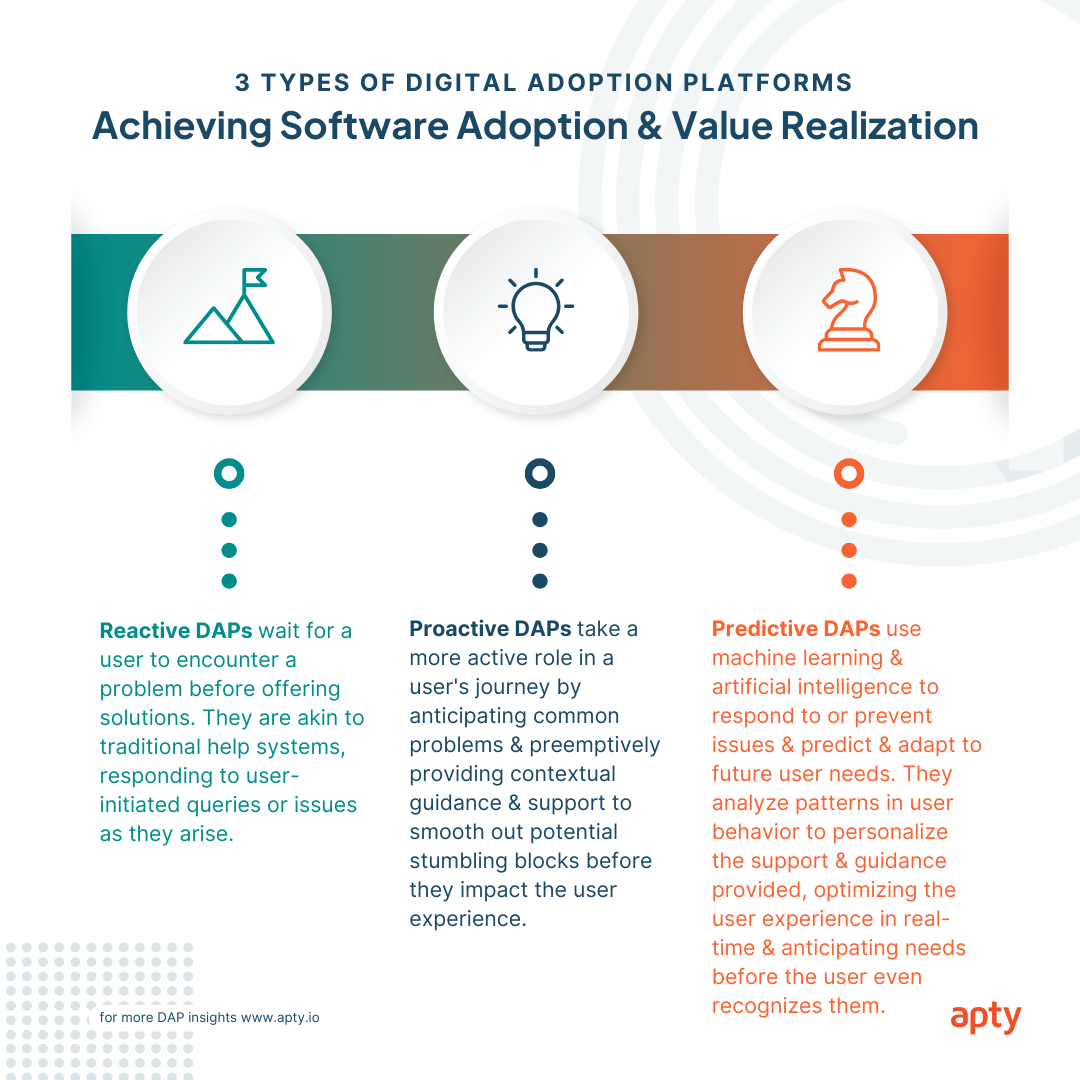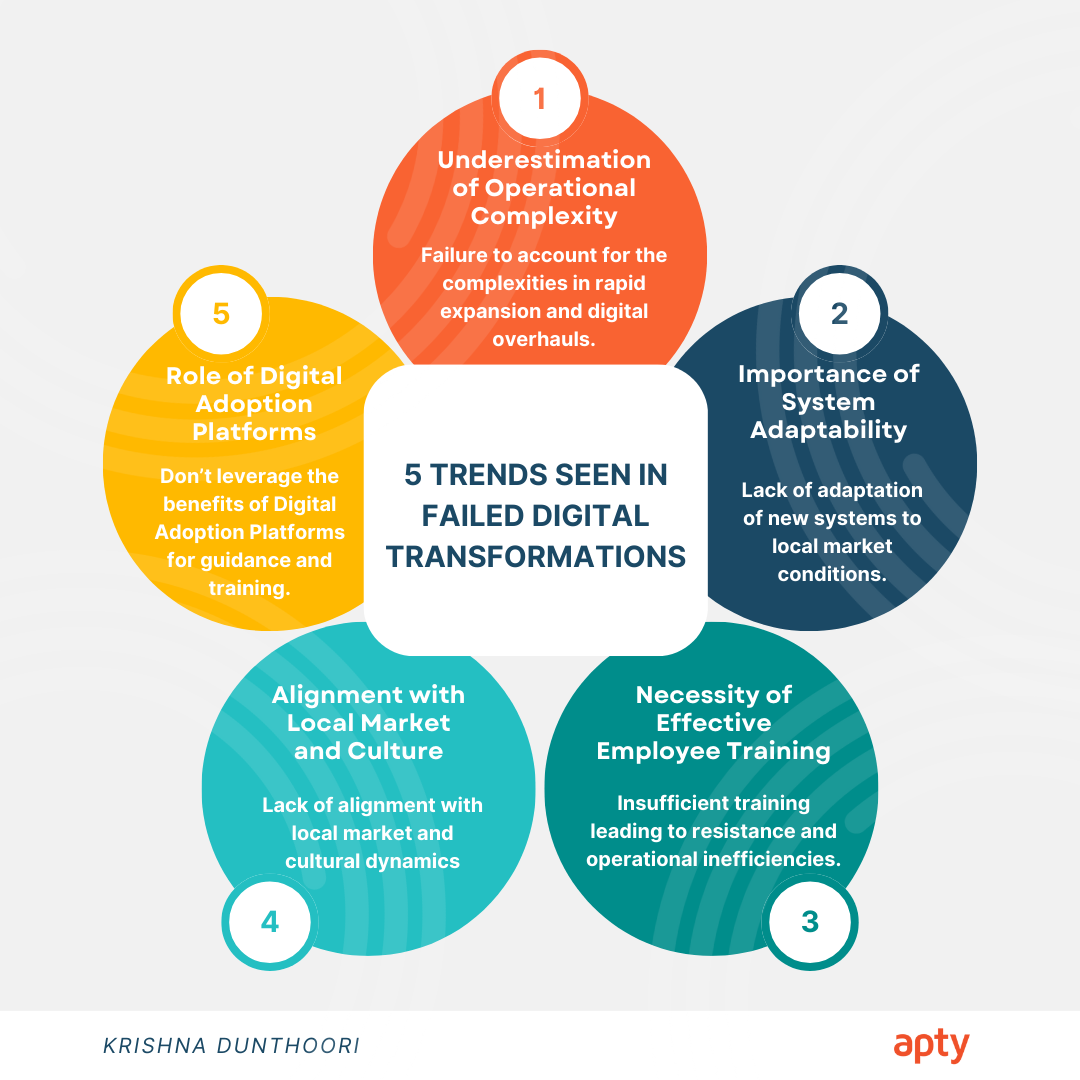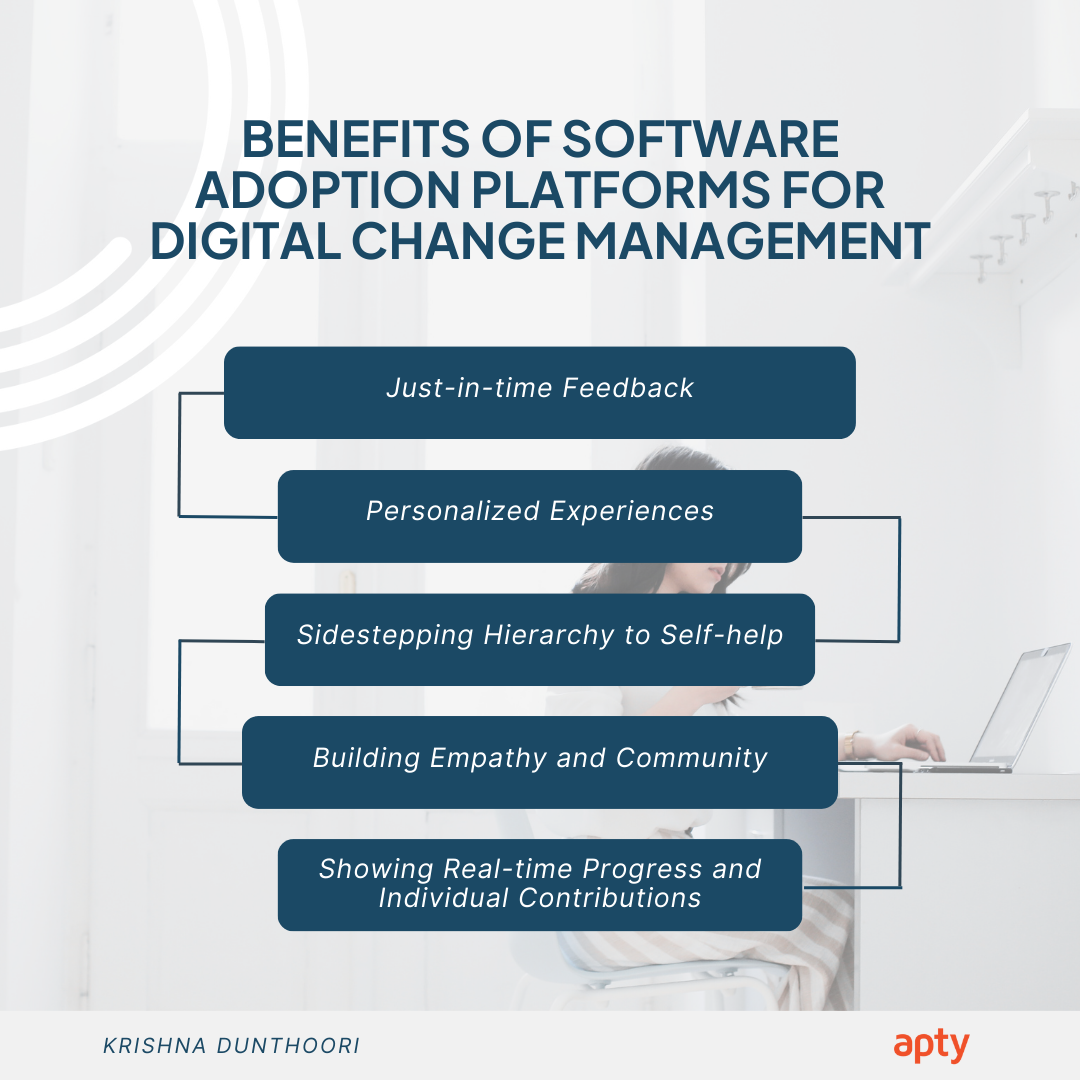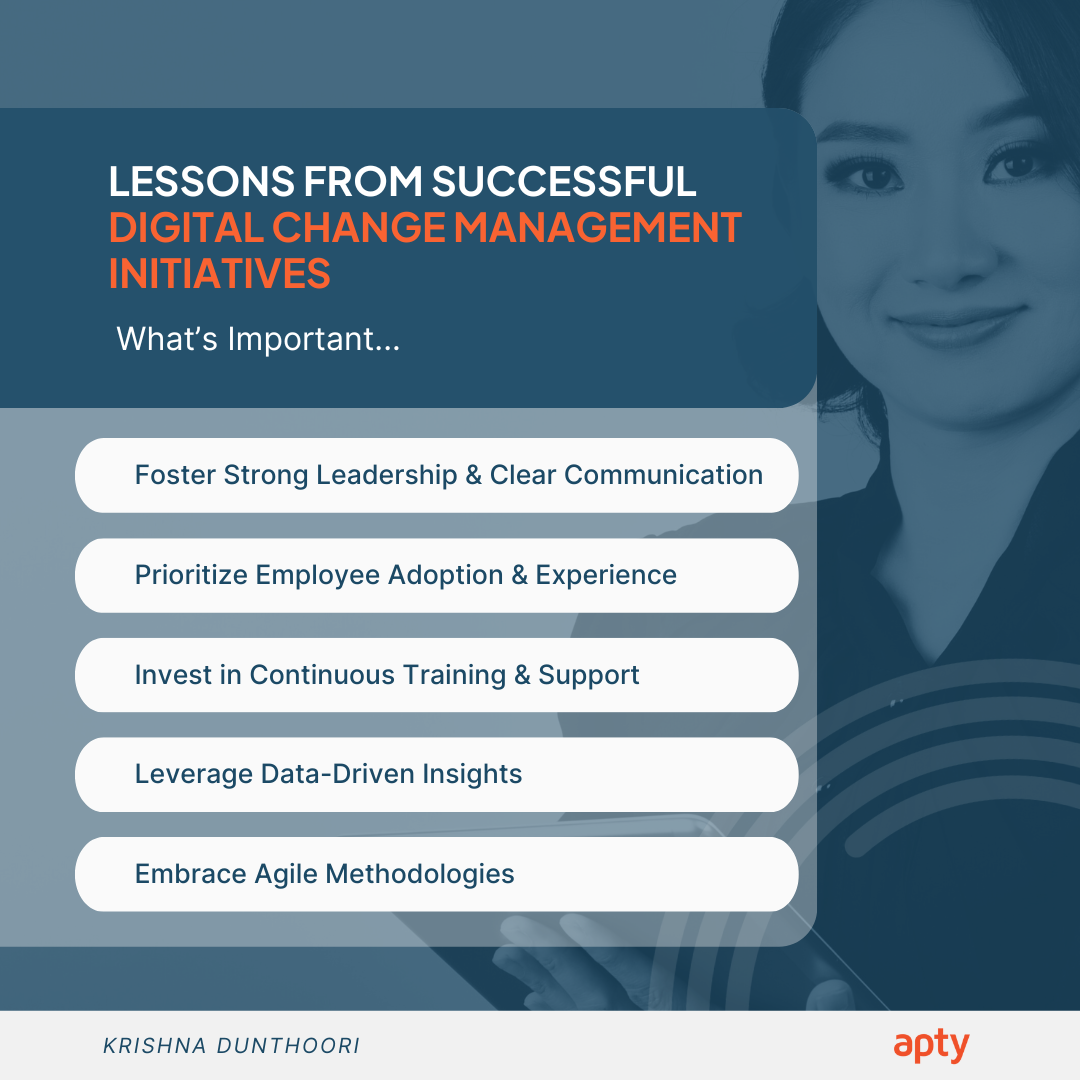Table of Contents
- What is a Digital Adoption Platform (DAP)?
- Understanding Reactive, Proactive, and Predictive Digital Adoption Platforms
- Key Benefits of DAPs
- Accelerated Software Adoption
- Improved Process Compliance
- Enhanced Employee Productivity and Engagement
- Data Accuracy and Integrity
- Seamless Change Management
- Streamlined Training and Onboarding
- Real-World Examples and Use Cases
The world is evolving rapidly, and organizations must constantly embrace cutting-edge technologies to stay competitive and agile. Organizations across all industries continuously seek innovative solutions to enhance operational efficiency, employee productivity, and customer satisfaction. But once implemented, do they see the value promised? Are employees using the software as intended–or not at all? A pivotal tool that has emerged as a cornerstone for achieving and monitoring these goals is the Digital Adoption Platform (DAP).
However, successfully adopting new software applications can be challenging, often resulting in reduced productivity and unrealized return on investment (ROI).
This is where Digital Adoption Platforms (DAPs) step in to bridge the gap and empower businesses to capitalize on their software investments fully.
Let’s delve into What is a Digital Adoption Platform, its core benefits, real-world examples, and how it seamlessly integrates with popular applications like Workday, Salesforce, and ServiceNow.
Relevant Read: Large organizations spend millions on software implementations, change management, and maintenance to drive digital initiatives, but sometimes the value isn’t seen. Choosing the right Digital Adoption Platform (DAP) can help you realize value faster and easier. Download the eBook below to learn more.
What is a Digital Adoption Platform (DAP)?
A Digital Adoption Platform (DAP) is a software solution designed to assist organizations in optimizing onboarding, training, change management, employees’ digital user experience, compliance, and, most importantly, tangible value. It goes beyond offering static tutorials and single in-person training sessions, an antiquated method. Instead, a DAP provides dynamic, contextual, and interactive support directly within the user interface of software applications. It provides an augmented tutorial of on-screen guidance, merging learning and development materials that may have gone underutilized with in-application walkthroughs for increased process compliance, process completion, and productivity.
A typical Digital Adoption Platform (DAP) is a software layer that sits on top of other digital tools and applications within an organization to facilitate seamless software adoption and connected tech stack experiences. Enterprise DAPs serve as a guide, helping users navigate complex software interfaces with interactive walkthroughs, task automation, and personalized support. By simplifying user experiences, DAPs ensure that employees and customers leverage the full range of functionalities offered by digital tools, optimizing software investments and driving digital transformation.
In doing so, DAPs empower employees to navigate complicated software applications seamlessly, driving the successful adoption of digital tools.
Proactive and predictive Digital Adoption Platforms take it one step further.
Understanding Reactive, Proactive, and Predictive Digital Adoption Platforms
Digital Adoption Platforms (DAPs) have evolved to meet the increasing complexity of enterprise software landscapes. They can be broadly categorized into reactive, proactive, and predictive types, each representing a different level of user engagement and system intelligence.
- Reactive DAPs wait for a user to encounter a problem before offering solutions. They are akin to traditional help systems, responding to user-initiated queries or issues as they arise.
- Proactive DAPs take a more active role in a user’s journey through an application. They anticipate common problems and provide contextual guidance and support preemptively to smooth out potential stumbling blocks before they impact the user experience.
- Predictive DAPs, the most advanced of the three, use machine learning and artificial intelligence to not just respond to or prevent issues, but also to predict and adapt to future user needs. They analyze patterns in user behavior to personalize the support and guidance provided, optimizing the user experience in real-time and anticipating needs before the user even recognizes them.

Key Benefits of DAPs



Accelerated Software Adoption
DAPs accelerate the learning curve for users, reducing the time it takes to become proficient in new software. Digital adoption platforms reduce the learning curve associated with new software by offering in-app guidance, significantly speeding up the adoption process. With context-sensitive guidance, employees can quickly grasp complex features, enabling organizations to fully leverage the capabilities of their software investments.
According to a McKinsey study, digital adoption solutions can speed up the adoption of new technologies, enabling employees to use software to its full potential without extensive training. McKinsey also reported that in an effort to mitigate COVID-19 workplace changes, organizations sped up the adoption of digital technologies by several years. The pace of adoption is increasing, yet some generations (e.g., Boomers) are left behind. DAPs have proven to close not only the digital divide but also the agism divide as workplaces turn to a fully digitalized environment.
Improved Process Compliance
Ensuring process compliance is crucial for businesses, especially in highly regulated industries like government, education, healthcare, finance, and pharmaceuticals. Digital adoption platforms ensure that processes are followed correctly through data field validations, positively enforced walkthroughs, and self-help in-app content, enhancing regulatory compliance across operations.
A DAP enforces standard procedures and guides users through compliant workflows, mitigating errors and promoting consistent best practices.
Enhanced Employee Productivity and Engagement
By providing real-time support, DAPs empower employees to work efficiently, boosting overall productivity and job satisfaction. Engaged employees are more likely to embrace change and contribute to the organization’s success.
Interactive guides and support tools boost employee confidence in using digital tools, leading to higher engagement and productivity.
Data Accuracy and Integrity
A DAP reduces the risk of data entry errors and improves data accuracy by guiding users through data input and validation processes. Clean and reliable data enables better decision-making and analysis.
By guiding users through correct processes, DAPs help maintain high levels of data quality and integrity.
Seamless Change Management
During digital transformation initiatives, resistance to change can impede progress. DAPs facilitate smoother transitions by supporting employees through the transformation process, easing anxieties, and increasing acceptance of new technologies.
DAPs facilitate smoother transitions during software upgrades or changes by providing immediate, contextual guidance to users.
Streamlined Training and Onboarding
DAPs offer interactive training and onboarding experiences, making it easier for new employees to get up to speed quickly. They can access relevant information and support directly within the application, leading to faster proficiency and reduced training costs.
Digital adoption platforms reduce the need for extensive training sessions, allowing new employees to learn on the job with less downtime.
Real-World Examples and Use Cases
To better understand the practical impact of Digital Adoption Platforms, let’s explore how a DAP empowers businesses with tangible results:
Example 1: Mattel
Before dying the red carpet pink and taking the box office by storm, Mattel became a rapidly growing enterprise seeking to streamline its onboarding process for new hires. By implementing step-by-step guided workflows and real-time support, Mattel witnessed a 90% Workday implementation in their first 60 days.
Rather than spending hours on training and traditional IT support sessions, Mattel’s implementation of a sound DAP gave them the boost needed to keep their business moving forward and save time and resources.
Example 2: Mary Kay
When you grow as fast as a company like Mary Kay, it can be a challenge to implement the proper training for your team.
Thankfully, they were able to use a DAP to empower more than 3 million global consultants with digital onboarding and training.
The challenge was to ensure consistent process compliance and data integrity while migrating to cloud-based platforms like Workday and Salesforce.
Leveraging their DAP’s seamless integration with these applications, Mary Kay achieved a remarkable 20% increase in process compliance and internal communication. With DAP’s contextual guidance, employees seamlessly transitioned to the new workflows, reducing errors and streamlining business operations.
Example 3: Global Bank
When you work on a global stage, it’s essential to navigate swiftly and smoothly with any software.
Global Bank used DAP to surpass its vision for data integrity goals throughout the company, so much so that it saved 80% on support costs.
For them, that meant less time building and organizing and more time doing what they do best.
This is important when you’re a bank because you’ll always need to be moving. Integrating a system while giving real-time updates is like trying to build an airplane in the air.
